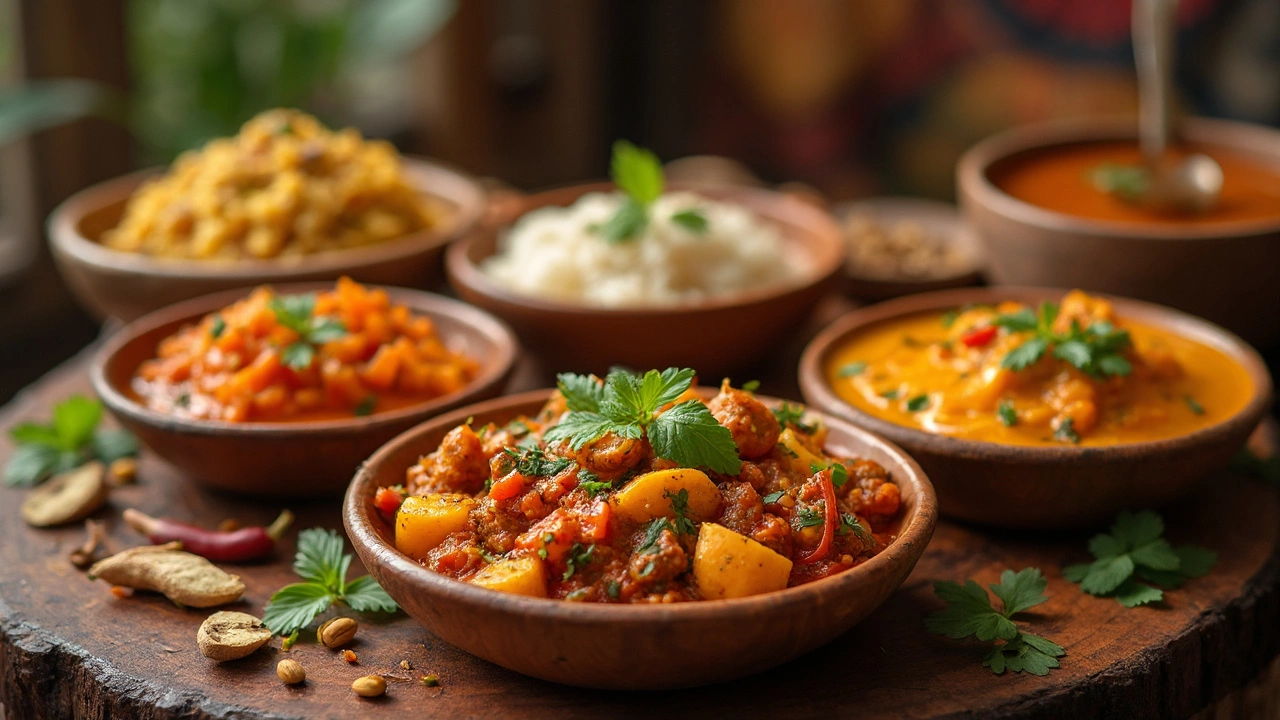Indian Food Nutrition: What You Need to Know
When exploring Indian food nutrition, the study of how traditional Indian dishes supply calories, vitamins, minerals, and macro‑nutrients. Also known as nutrition in Indian cuisine, it helps you balance flavor with health.
Key Nutrition Themes in Indian Cooking
Take dosa, a fermented rice‑lentil crepe popular in South India as a case study. Though light on fat, its carbs give quick energy, and pairing it with protein, the building block for muscles and enzymes like paneer, lentils, or boiled eggs turns a simple snack into a balanced meal. This shows how Indian food nutrition links carbohydrate sources with protein to create lasting fullness.
Breakfast in India isn’t just about taste; it’s a crucial nutrition window. Items such as upma, poha, or idli provide complex carbs, while adding nuts, seeds, or yogurt injects protein and healthy fats. When you choose a protein‑rich breakfast, you set the stage for better weight management, because protein boosts metabolism and curbs cravings later in the day. That connection between morning meals and weight control is a recurring thread across many of our posts.
Fats often get a bad rap, but the type of oil you cook with matters a lot. Healthy oils, such as mustard oil, groundnut oil, or ghee in moderation supply essential fatty acids that aid nutrient absorption, especially for fat‑soluble vitamins like A, D, E, and K. Swapping a heavily processed oil for one with a higher smoke point and favorable omega‑3 profile can improve the overall nutrient density of a curry or stir‑fry.
Spices aren’t just flavor boosters; they contribute micronutrients and antioxidants. Turmeric offers curcumin, a compound linked to anti‑inflammatory benefits, while cumin seeds bring iron and digestive enzymes. When you layer spices thoughtfully, you enhance both taste and the vitamin‑mineral profile of a dish, making the meal more than just calories.
India’s regional diversity means nutrition varies by locale. In the north, wheat‑based rotis paired with lentil dals provide a steady protein‑carb combo, while the south favors rice, coconut, and lentils. Understanding these patterns helps you plan a balanced diet without skipping beloved dishes. It also highlights how meal timing—whether lunch or dinner—can influence blood sugar levels, especially when combined with high‑glycemic foods.
Practical tips for boosting nutrition in everyday cooking include: adding a handful of mixed nuts to oatmeal, sprinkling hemp or chia seeds onto salads, using low‑fat dairy alternatives in biryani, and finishing soups with a squeeze of lemon for vitamin C. Small tweaks like these accumulate, turning a standard plate into a nutrient‑dense powerhouse.
Below you’ll find a curated list of articles that dive deeper into each of these topics—from quick breakfast ideas and high‑protein snack recipes to detailed guides on choosing the right cooking oil and mastering dosa batter nutrition. Explore the articles to get hands‑on advice, step‑by‑step recipes, and science‑backed explanations that will help you make smarter, healthier choices in Indian cooking.
Discovering the Healthiest Indian Curry to Order
Indian cuisine is a delicious blend of spices, textures, and flavors that can also be nutritious. But not all curries are created equal when it comes to health. This article explores the healthiest curry options you can choose that are rich in vitamins, low in calories, and full of flavor. Learn about ingredients that lend health benefits and tips on making smarter curry choices while dining out. Dive into the world of healthy Indian meals without sacrificing taste.
Read more